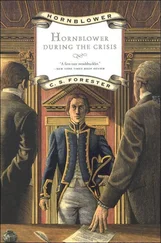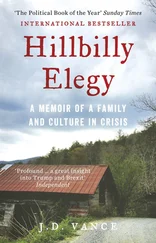• • •
In one of the shops in the Västermalm centre looms a big green cloth dinosaur. As we hurry past we glimpse our reflections in the window: Beata, Greta, Svante, the dinosaur and me.
If we hadn’t had so many diagnoses, so many obsessive-compulsive and eating disorders, if Svante didn’t need to pee like he always does, we could have stopped and taken a photo.
It would have been a perfect transition to a larger geologic perspective.
But it is what it is.
‘I wonder if the dinosaurs had ADHD,’ Svante says.
‘Yep,’ Beata answers. ‘They had Asperger’s, OCD, ODD and ADHD like me. That was why they became extinct. They had too many thoughts in their heads and couldn’t concentrate and so they went crazy from all the disturbing sounds.’
SCENE 92.
Infinite Growth on a Finite Planet
The dinosaurs lived on earth for about 200 million years, a short period if you consider the earth’s 4.6 billion-year history.
We humans have only existed for about 200,000 years. But we’ve already managed to create stuffed animals shaped like reptiles that died out over 60 million years ago; stuffed animals that we mass produce in China and ship all over the world and sell to anyone who can afford such things.
Not everyone can.
But many can, and every day they become more and more, and that sort of thing takes resources.
But the resources aren’t increasing.
There are limits to what we can get out of this well-exploited planet every year.
One of those resources is running out at a furious speed, and the dinosaur in the toy shop shares part of the blame.
We all share part of the blame.
But not equally, of course.
• • •
The world’s richest 10 per cent account for half of all greenhouse-gas emissions, which right now are destroying one of our most important natural resources: a balanced and functioning atmosphere.
At the current pace of emissions, that natural resource will soon be gone, and the fact that so few of us are aware of it must be one of Homo sapiens ’ greatest failures.
But how are we supposed to know?
We’re in a crisis that has never been treated as a crisis.
• • •
The poorest half of the earth’s population accounts for only 10 per cent of the world’s CO 2emissions, and if we are going to find role models, that is probably where we’ll find them. Rather than among celebrities like me. Or among Hollywood stars and former American politicians with more annual flight hours than an average fighter pilot.
• • •
The climate researcher Kevin Anderson makes the point that if the world’s richest 10 per cent were required to lower their emission levels to the European Union average, the world’s emissions would go down by 30 per cent . That – and many other quick measures – could give us time.
We really thought she’d be home by lunch. If she even left at all.
But that’s not what happened.
On the morning of 20 August 2018, Greta gets up an hour earlier than on a regular school day.
She has her breakfast. Fills a backpack with schoolbooks, a lunchbox, utensils, a water bottle, a cushion and an extra sweater.
She has printed out 100 flyers with facts and source references about the climate and sustainability crisis. The text is 5,303 characters long, including spaces. And on the front it says in big, black letters:
We children don’t usually do
as you say.
We do as you do.
And because you grown-ups
don’t give a damn about my future,
neither do I.
My name is Greta and I’m in 9th grade.
And I am going on strike from school for the climate
until Election Day.
She walks her white bicycle out of the garage. It has barely been used. In the past four years she hasn’t had the inclination or energy to go places on her own. Much less to ride her bike for fun.
She gets on the saddle, glances behind her, and rolls off along Kungsholms Strand, past the City Hall, and then, towards Drottninggatan.
On Tegelbacken, some tourists are standing around smoking as the old steamboats send up their coal-black clouds into the clear blue late summer sky above the rush-hour traffic on Centralbron and Söderleden. Svante cycles a few metres behind her, with the sign under his right arm.
The Thursday before – four days ago – she walked past to see what the streets around Parliament look like and to decide where she would sit.
‘Against the wall inside the pillars would be good,’ she said.
Svante nodded.
Then she asked him to take a picture of her by the railings in front of the bridge.
She had on a black T-shirt with a crossed-out aeroplane on the front.
Like a road sign.
Before they left she stopped for a moment by the statue of the begging fox with the blanket.
She looked at Drottninggatan. At the bridge. She observed the Parliament building on the other side of Stockholms Ström.
‘Is it really true that no one else has ever done this before?’ she asked.
‘No, I don’t think so,’ Svante answered.
‘But it’s so simple,’ she said.
Then she cycled home and finished painting the white hardboard sign. The sign she bought from the leftover pieces at Bygg-Ole for 20 kronor.
• • •
The weather is rather lovely this Monday morning. The sun is rising behind the Old Town and there is little to no chance of rain. The cycle paths and pavements are filled with people on their way to work.
As cycle paths and pavements are on an ordinary weekday morning at the end of August.
Today is the start of school.
Outside Rosenbad, which houses the prime minister’s office, she stops and gets off her bicycle.
Svante helps her take a picture before they lock the bicycles to the railings and hang Greta’s bicycle helmet on the handlebars. Then she nods an almost invisible goodbye to Dad and, with the clunky sign in her arms, staggers around the corner where the bicycle path turns left towards the government block.
‘Hurry off to school now, okay?’ Svante calls. Half joking.
She doesn’t react. Just keeps going.
And there, somewhere on the road towards the bridge by Drottninggatan, she passes the invisible boundary, the point of no return.
She crosses the bridge and passes under the arch, continues a few steps onto Riksgatan before she stops and leans the sign against the greyish-red granite wall.
Sets out her flyers.
Settles down.
She asks a passerby to take another picture with her phone and posts both pictures on social media before she puts the phone away in the small violet Björn Borg backpack, a Christmas gift from her grandmother four years ago.
• • •
Svante stays by the bicycles until she has disappeared from view. A large salmon jumps up out of the water and for a moment is suspended in midair, before it breaks the surface with a splash.
A few hundred metres above Helgeandsholmen a bird of prey circles, round and round.
Maybe an eagle.
Or an osprey?
He lets go of the railings and walks over to Fredsgatan, up to a coffee shop by the Ministry of Education. Orders a large oat-milk latte, sits down by the window and tries to work.
But it’s not an easy thing to do.
• • •
After a few minutes the first sharing on Twitter starts. The musician and climate advocate Staffan Lindberg retweets her post.
Читать дальше






![Корнелл Вулрич - Murder at Mother’s Knee [= Something That Happened in Our House]](/books/398097/kornell-vulrich-murder-at-mother-s-knee-somethin-thumb.webp)





